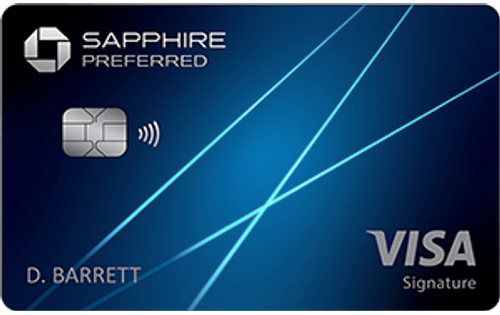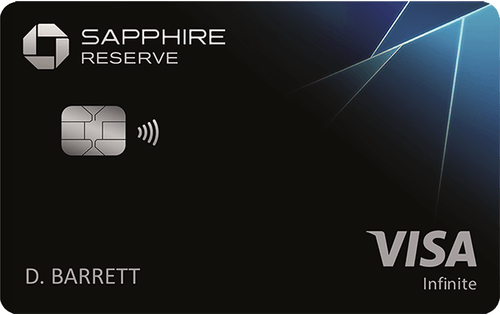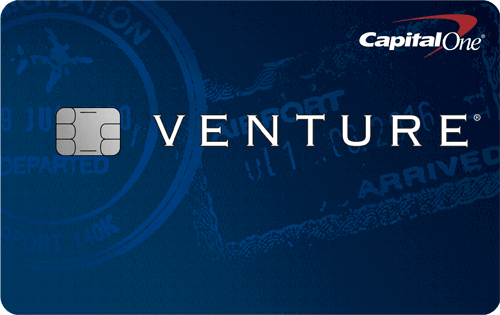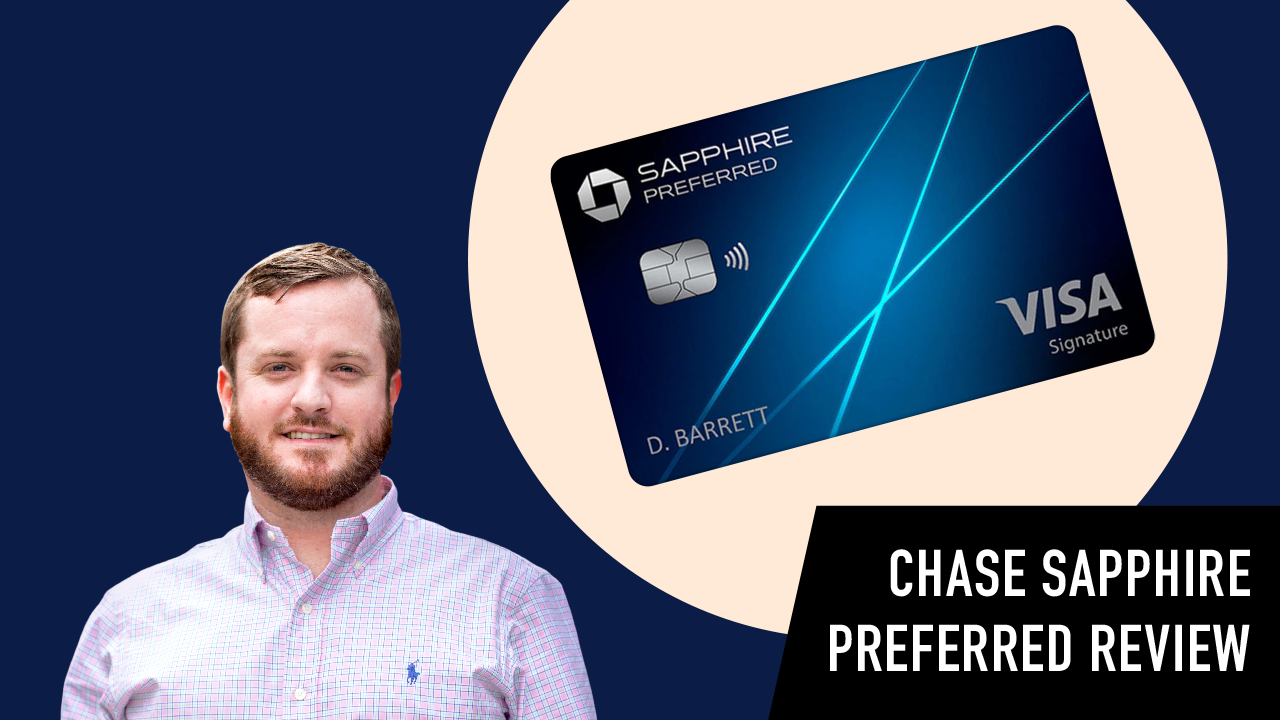Pros
- 60,000 points - initial bonus
- Up to 6.25% back when redeeming for travel
- No foreign transaction fees
Cons
- $95 Annual fee
- 1 point per $1 base earn rate
Chase Sapphire Preferred® Card
- Enjoy benefits such as 5x on travel purchased through Chase Travel℠, 3x on dining, select streaming services and online groceries, 2x on all other travel purchases, 1x on all other purchases, $50 Annual Chase Travel Hotel Credit, plus more.
Earn 60,000 bonus points after you spend $4,000 on purchases in the first 3 months from account opening. That's $750 when you redeem through Chase Travel℠.
Rewards Details
- Earn 60,000 bonus points after you spend $4,000 on purchases in the first 3 months from account opening. That's $750 when you redeem through Chase Travel℠.
- Enjoy benefits such as 5x on travel purchased through Chase Travel℠, 3x on dining, select streaming services and online groceries, 2x on all other travel purchases, 1x on all other purchases, $50 Annual Chase Travel Hotel Credit, plus more.
- Get 25% more value when you redeem for airfare, hotels, car rentals and cruises through Chase Travel℠. For example, 60,000 points are worth $750 toward travel.
- Get complimentary access to DashPass which unlocks $0 delivery fees and lower service fees for a minimum of one year when you activate by December 31, 2024.
Additional Info
- Count on Trip Cancellation/Interruption Insurance, Auto Rental Collision Damage Waiver, Lost Luggage Insurance and more.
- Member FDIC
- More Details & Reviews About Chase Sapphire Preferred® Card
Is Chase Sapphire Preferred Worth It?
Yes, Chase Sapphire Preferred® is absolutely worth getting if you are a frequent traveler with good credit. The outstanding rewards and benefits it offers make it one of the best rewards credit cards on the market and easily justify its $95 annual fee.
With Sapphire Preferred, the average person would earn roughly $2,028 in net rewards value over the first two years of use. That’s with the card’s annual fee factored in, too.
How Much Do You Have to Spend?
Chase Sapphire Preferred is worth it if you spend $4,000 during the first 3 months your account is open, as you’ll qualify for an initial bonus of 60,000 points. Those bonus points are worth up to $750 in travel through Chase, which can cover the cost of the card’s membership fees for years.
Without the initial bonus, you’ll need to spend $1,520 to $9,500 per year for Chase Sapphire Preferred to be worth it, depending on what you purchase and how you redeem your points. When redeemed for cash back, Chase Sapphire Preferred points are worth a penny each, but the value jumps to 1.25 cents per point when you redeem for travel through Chase Travel. That’s how I use my own Chase Sapphire Preferred rewards, and I have another card for everyday cash back.
What Makes Chase Sapphire Preferred Worth It?
Lucrative Initial Rewards Bonus
Spending at least $4,000 during the first 3 months your account is open scores you 60,000 bonus points, redeemable for $750 in travel booked through Chase Travel or a $600 statement credit.
If you’re going to spend enough to qualify anyway, that’s a pretty sweet deal. For example, when I got my Sapphire Preferred sign-up bonus, I used the points to book airfare for a golf trip with friends.
$0 Foreign Transaction Fee
This is a key feature for travel rewards cards, enabling consumers to visit other countries without giving a second thought to their credit card or coming home to a bill affixed with a 2% to 4% international usage charge. Even if you don’t plan on leaving the country, this could come in handy if you ever buy something whose purchase price is expressed in a foreign currency or from an internationally based merchant.
Up To 6.25% Cash Back On Travel
Sapphire Preferred offers 5 points per $1 spent on travel booked through Chase Travel and 2 points per $1 spent on all other travel (see below for specifics). You will also earn 3 points per $1 on dining (including eligible delivery services and takeout), select streaming services, and online grocery purchases (excluding Target, Walmart and wholesale clubs).
When you factor in the 25% point bonus that you get when redeeming your earnings for Chase travel reservations, those earning rates equate to as much as 6.25% cash back. I don’t always get that top rewards rate because I usually book travel through third-party booking sites, but I do try to use this card for travel expenses, as well as for dining and streaming.
Chase considers transactions made with the following types of providers to be travel-related:
| Airlines | Taxis and limousines |
| Hotels and motels | Bridge and highway tolls |
| Car rental agencies | Cruise lines |
| Discount travel sites | Ferries |
| Parking lots and garages | Timeshares |
| Trains | Campgrounds |
| Buses | Travel agencies |
Rewards Redemption Variety
The Chase Sapphire Preferred® Card enables you to choose your preferred redemption method without having to worry about your points losing much value in the process. In addition to the 1.25 cents per point that you get when redeeming for travel through Chase, points are worth a bit more than one cent each, on average, when redeemed for merchandise using “Shop Through Chase.”
You’ll also get a penny per point when you use your earnings to buy gift cards or pay your bill via statement credit. When redeemed for Amazon.com purchases, each point is worth just $0.008.
The key is not to sacrifice value for convenience. I personally ignore the Amazon option and redeem for travel when I can.
13 Rewards Transfer Partners
If you can’t find the travel accommodations that you want through Chase, you can transfer your points to one of its 13 rewards partners at a 1:1 ratio. For instance, one Sapphire Preferred point can be converted to one United Airlines mile. While doing so would mean sacrificing your 25% rewards bonus for travel redeemed directly through Chase Travel, having the option does provide a measure of flexibility – especially if you have rewards in another loyalty account that you’d like to make useful as well.
Just make sure you get your money’s worth from whichever travel provider you transfer your points to. For a point of reference, 1,000 points end up being worth around $9 on average when transferred to and redeemed with Chase’s hotel partners.
Metal Card
This is purely a flourish. Having a metal credit card instead of a standard plastic one provides no real benefit other than it being harder to damage. It certainly doesn’t hurt – Sapphire Preferred is a cool-looking card – but a credit card’s material or design should never be a prominent factor in your credit card choice.
That said, Chase Sapphire Preferred is the most impressive-looking card in my wallet, and it really does have a classy feel to it. That’s not why I got the card, but I probably do use it more than I would otherwise.
Drawbacks of Chase Sapphire Preferred
Up To 1.25% In Rewards On Most Purchases
Even if you manage to redeem your points for travel, giving your earnings a 25% bump in value, you will still end up pulling in only one point per dollar spent on most purchases. Sapphire Preferred’s bonus points offer only applies to a few categories.
$95 Annual Fee
Many of the best rewards credit cards charge annual fees. The problem is, some of Sapphire Preferred’s chief competitors charge less.
21.49% - 28.49% (V) APR
This certainly isn’t the highest regular APR among credit cards for people with excellent credit, but it’s still above-average. So, while not paying your bill in full a given month won’t cost you too much, you shouldn’t be lulled into the comfort of consistently carrying a revolving balance. There are better cards for that.
Chase Sapphire Preferred vs. the Competition
The upper echelon of the rewards credit card market is extremely competitive. And while you can’t really go wrong with any of these top-tier offers, it makes sense to understand the differences between them in order to make the best choice for your personal spending habits.
For more information, you can also check out these in-depth comparisons:
Chase Sapphire Preferred® Card Review Methodology
This Chase Sapphire Preferred® Card review is based on WalletHub’s proprietary 100-point credit card rating system. By using a consistent methodology to evaluate the Chase Sapphire Preferred® Card and all other cards, WalletHub’s credit card experts make it easy for people to compare their options and find the best credit cards for their needs.
The WalletHub rating system uses 16 key metrics grouped into seven categories: Fees, Rewards, Two-year Cost, Interest Rates, Approval Requirements, Special Features, and Reviews. Each metric has a maximum number of points allocated to it, based on the metric’s importance as determined by our editors. The points are added up to create an overall rating for the Chase Sapphire Preferred® Card out of a maximum of 100 points, which is then converted to a 5-point scale.
Ratings for each category reflect how close Chase Sapphire Preferred is to WalletHub’s definition of a 5-star credit card, which is based on market conditions and what we believe are reasonable terms. We compare Chase Sapphire Preferred to that standard to give a numerical approximation of how reasonable and competitive its terms are compared to other cards.
To learn more about how WalletHub rates credit card offers, check out our full credit card review methodology.
Ask the Experts
To gain more insight about Chase Sapphire Preferred Card Review, WalletHub posed the following questions to a panel of experts. Click on the experts below to view their bios and answers.
1. Do you expect initial rewards bonuses on travel rewards credit cards to get better or worse in the next 12 months?
2. How much do people need to travel for a travel rewards credit card that charges an annual fee to be worthwhile?
3. What should consumers watch out for when booking airfare, hotel reservations and other travel accommodations through a credit card company’s rewards portal?
Ask the Experts
Assistant Professor of Marketing, Kennesaw State University, Coles College of Business
Read More
Professor of Hospitality & Tourism, College of Business, Tennessee State University
Read More
MIHTM, MSEM, CHE, CHI, Instructor, School of Hospitality and Tourism Management, College of Hospitality, Retail and Sport Management, University of South Carolina
Read More
Associate Professor of Marketing, Bentley University
Read More
Associate Professor of Behavioral Science, University of Chicago Booth School of Business
Read More
Ph.D., Associate Professor, School of Aviation and Transportation Technology, Purdue University
Read More














WalletHub experts are widely quoted. Contact our media team to schedule an interview.